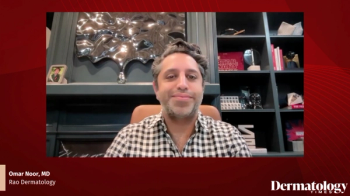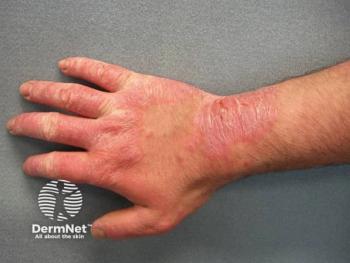
Enzymatic Debridement Is More Effective than Autolytic for Severe Wounds
Key Takeaways
- Enzymatic debridement is more effective for severe wounds, showing faster wound size reduction and higher healing rates compared to autolytic debridement.
- Autolytic debridement is non-invasive and suitable for non-severe wounds, but it may be slower and less effective for extensive necrosis or high infection risk.
Although both methods were well tolerated, enzymatic debridement worked faster in randomized controlled trials.
A new systematic review has compared autolytic and enzymatic debridement methods in chronic wound care.1 Although both techniques were well tolerated, enzymatic is best for severe wounds. However, the non-invasive nature of autolytic debridement makes it suitable for non-severe wounds.
“The choice of debridement technique significantly influences the rate of wound healing, patient comfort, and overall clinical outcomes,” the authors wrote.
The review utilized prospective randomized controlled trials and observational cohort studies that focused on chronic wounds, including diabetic foot ulcers, pressure ulcers, venous leg ulcers, and post-traumatic burn wounds. Electronic databases like PubMed, Web of Science, Cochrane Library, and Scopus were searched in September 2024. Data such as study design, sample size and characteristics, clinical outcomes, and follow-up duration were extracted.
After an initial systemic search of 1371 articles, 5 studies were used in the final analysis involving 236 patients. The sample sizes ranged from 27 to 100 participants with follow-ups lasting between 3 to 8 weeks. The primary outcomes included wound size reduction, epithelialization, granulation tissue formation, and speed of healing. Patient-reported pain, complications, and adverse effects were considered as secondary outcomes.
Overall, enzymatic debridement was more effective in all primary and secondary outcomes. Wound size was reduced faster with a 65% size reduction in the enzymatic group versus 50% in the autolytic group (p < 0.05). This was observed in all studies, but especially in trials with longer follow-ups.
Rates of granulation tissue formation and epithelialization were also higher and led to quicker wound closure and tissue regeneration, particularly with collagenase. However, autolytic debridement did show strong early results, but this was not sustained compared to enzymatic.
Approximately 65% of patients who used enzymatic debridement found complete healing compared to 50% for autolytic methods (p = 0.04). This was assessed in 3 of the studies. The most common adverse effect in the enzymatic group was mild irritation. There were no severe complications and both techniques were well tolerated.
A potential limitation of this study is the lack of information on the wound environment and extra interventions such as compression therapy, offloading devices, specialized beds, and revascularization procedures. This lack of reporting should be addressed in future, large-scale, long-term literature to give more comprehensive findings on the connection between debridement methods and holistic wound care.
Autolytic debridement breaks down necrotic tissue with the body’s own enzymes and moisture-retentive dressings. This method is non-invasive, gentle, selective, and pain-free, but it can be a slower process, which may not be suitable for wounds with extensive necrosis or high infection risk.2
Enzymatic debridement is done by applying topical exogenous enzymes, like collagenase. Other enzymatic agents include papain and bromelain, which have both shown promise but can be evaluated further in future studies. This method is faster and can be combined with other wound healing therapies, especially when treating larger wounds. However, it can be more expensive and may cause adverse reactions like localized irritation and inflammation.3 This research was the first comprehensive and consistent systemic review to compare the efficacy of the 2 treatments.
“The choice between these two methods should be guided by individual patient needs, wound characteristics, and clinical goals, balancing the speed of healing with potential side effects and costs,” the authors concluded.
References
1. Amadeh A, Mohebbi N, Amadeh Z, Jamshidbeigi A. Comparative Efficacy of Autolytic and Collagenase-Based Enzymatic Debridement in Chronic Wound Healing: A Comprehensive Systematic Review. Int Wound J. 2025;22(4):e70177. doi:10.1111/iwj.70177
2. Liu, W. L., Jiang, Y. L., Wang, Y. Q., Li, Y. X., & Liu, Y. X. (2017). Combined debridement in chronic wounds: A literature review. Chinese Nursing Research, 4(1), 5-8.
3. Ramundo J, Gray M. Collagenase for enzymatic debridement: a systematic review. J Wound Ostomy Continence Nurs. 2009;36(6 Suppl):S4-S11. doi:10.1097/WON.0b013e3181bfdf83
Newsletter
Like what you’re reading? Subscribe to Dermatology Times for weekly updates on therapies, innovations, and real-world practice tips.



















